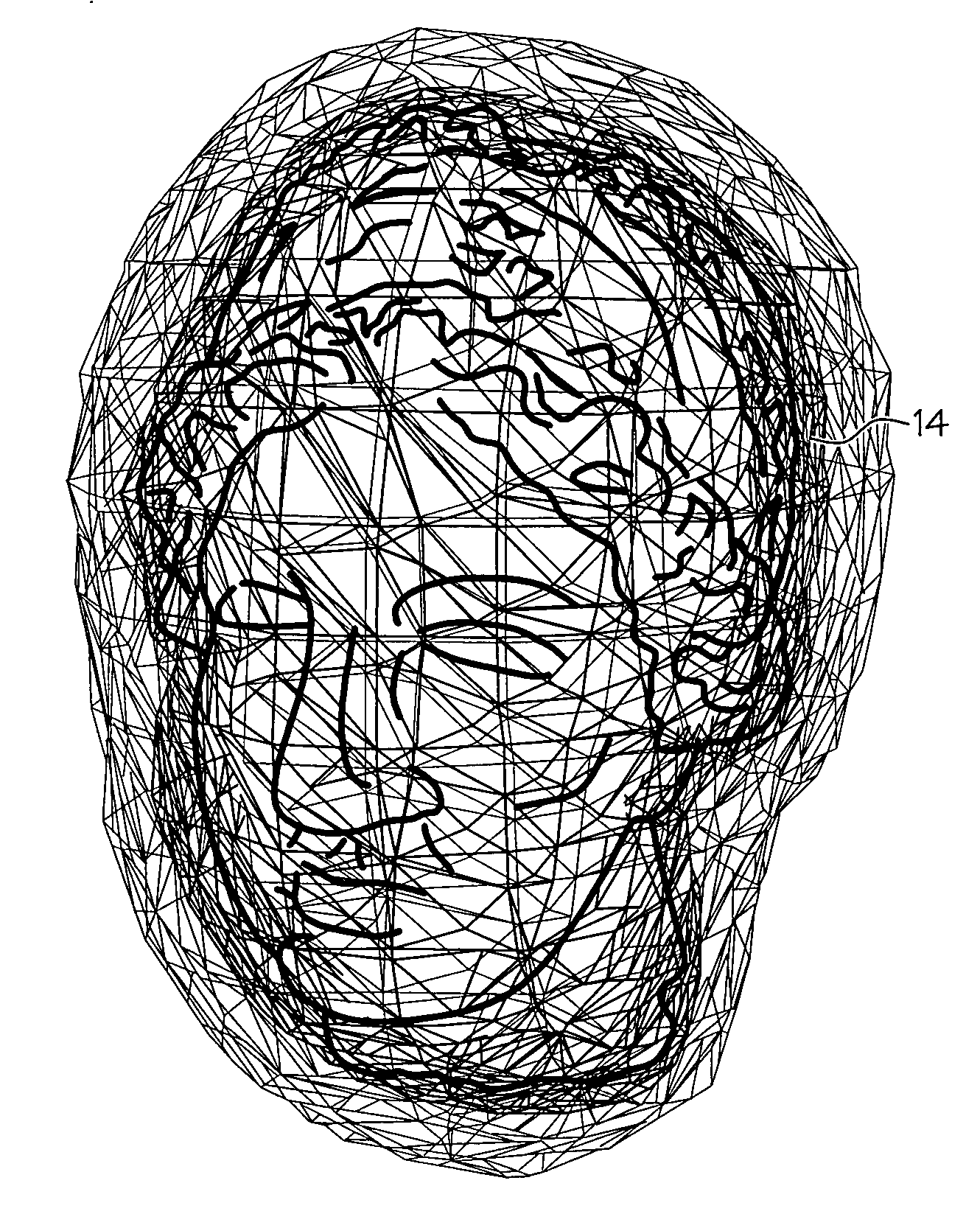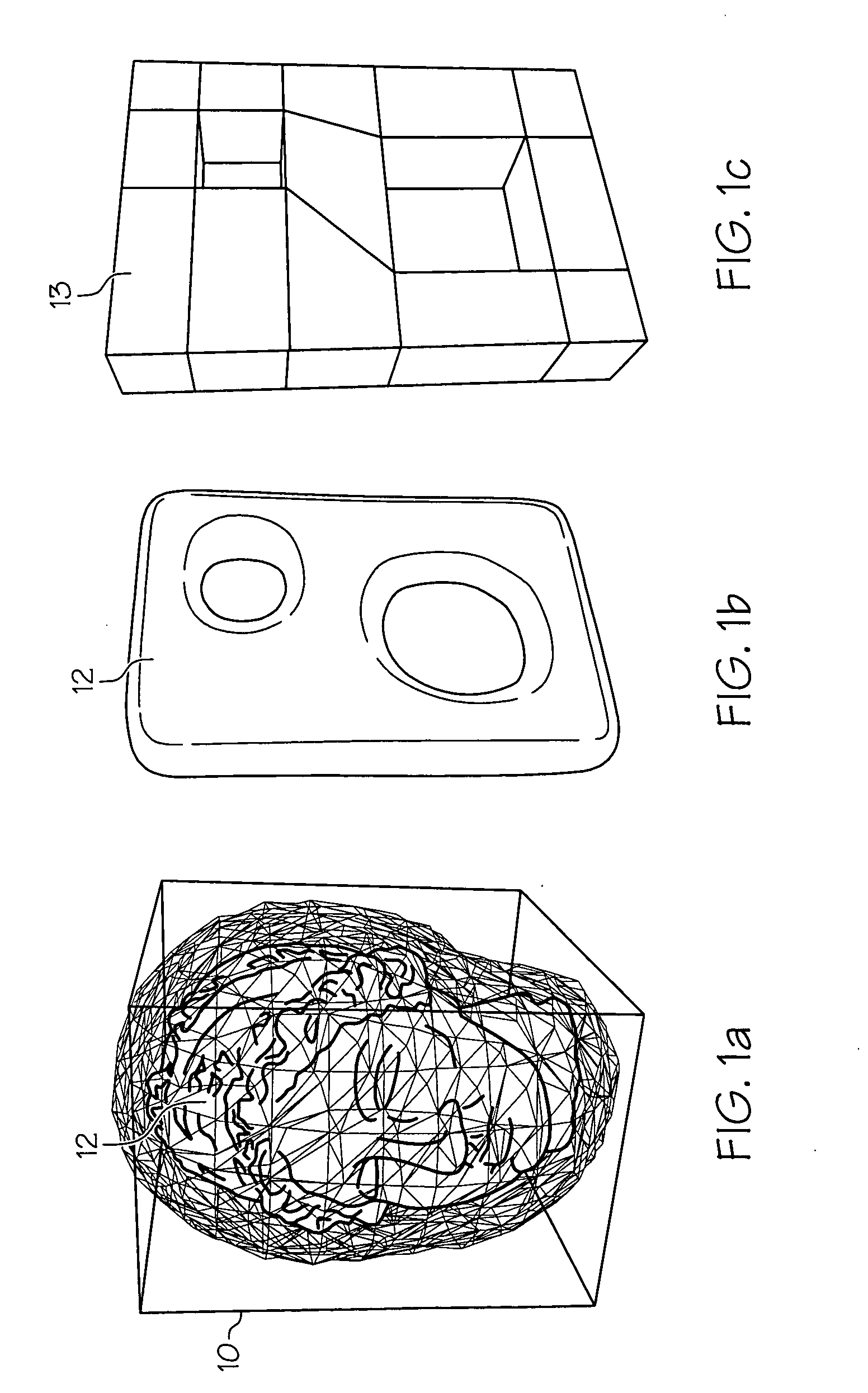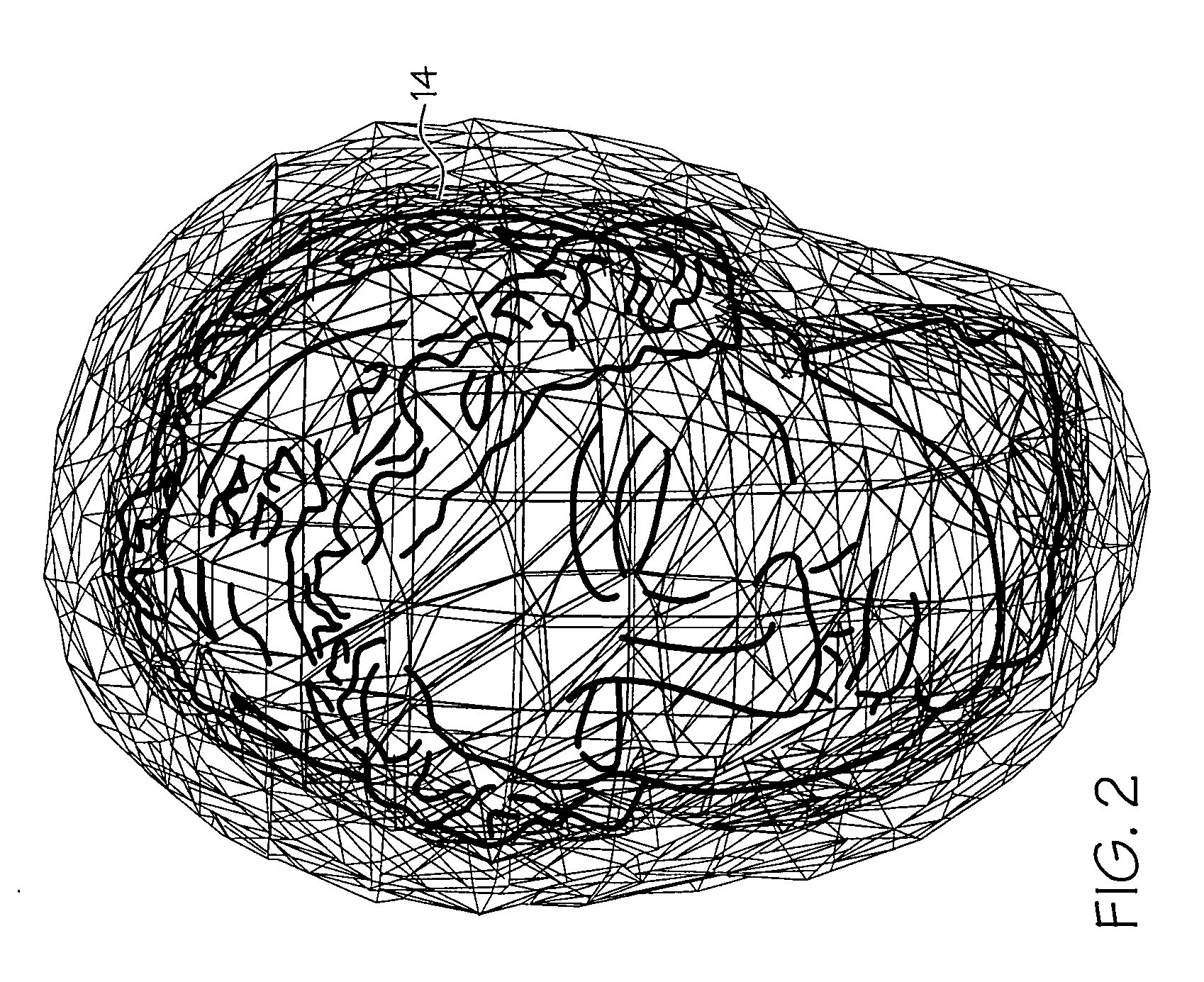Method, system, and program product for re-meshing of a three-dimensional input model using progressive implicit approximating levels
a three-dimensional input model and implicit approximation technology, applied in the field of geometric modeling in computer graphics, can solve problems such as challenging problems
- Summary
- Abstract
- Description
- Claims
- Application Information
AI Technical Summary
Benefits of technology
Problems solved by technology
Method used
Image
Examples
Embodiment Construction
[0024] For convenience purposes, the Detailed Description of the Invention will have the following sub-sections.
I. General Description
[0025] A. Volume Representation with Implicit Surface Modeling
[0026] B. Volume Contouring
[0027] II. Computerized Implementation
I. General Description
[0028] In general, the present invention is based on multiple observations. First, it is recognized that local re-meshing operations applied directly to the original connectivity of an input mesh fail to preserve the global structure of the geometry, and generate output that heavily depends on the original mesh connectivity. For the same geometry model with different mesh representations, this surface strategy might generate two completely different re-meshing results. Instead, it is desirable to obtain a unique subdivision base mesh that captures the basic shape information of the input. To achieve this, in contrast to prior surface-based methods, the present invention considers the geometric mod...
PUM
 Login to View More
Login to View More Abstract
Description
Claims
Application Information
 Login to View More
Login to View More - R&D
- Intellectual Property
- Life Sciences
- Materials
- Tech Scout
- Unparalleled Data Quality
- Higher Quality Content
- 60% Fewer Hallucinations
Browse by: Latest US Patents, China's latest patents, Technical Efficacy Thesaurus, Application Domain, Technology Topic, Popular Technical Reports.
© 2025 PatSnap. All rights reserved.Legal|Privacy policy|Modern Slavery Act Transparency Statement|Sitemap|About US| Contact US: help@patsnap.com



